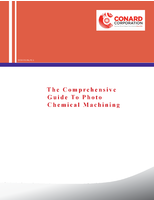Test Instrument measures sealing of flexible packages.
Press Release Summary:

Based on positive pressure method, LSSD Leak and Seal Strength Detector can test whole and partial seal-leakage character of flexible packages such as caps, containers, and flexible tubes. Burst Test involves puffing air into packages to increase inside pressure until packages burst, while Creep Test keeps pressures inside packages for regulated period of time. With Creep to Failure Test, instrument increases pressures inside package bags to specified pressure and keeps it until packages leak.
Original Press Release:
Test Instrument Measure Sealing Capability of Flexible Package Bags
LSSD (Leak and Seal Strength Detector is a new instruments presented by Labthink), based on positive pressure method, can test the whole and partial seal-leakage character of flexible packages such as caps, containers, flexible tubes and so on. It is the sealability testing instrument with the most complete testing index at present and can accomplish special testing items of flexible packages such as open packages and closed packages with testing accessory.
There are three ways to test flexible package bags with LSSD. They can be applied to evaluate the sealability of flexible package bags at each step of packaging.
Burst Test: puffing air into packages to increase the inside pressure until the packages burst. This testing method can test the maximum bursting pressure of the specimen.
Creep Test: keeping pressures inside packages for a regulated period of time. Specimens that do not leak during the test are classified as “passed”; otherwise, classified as “failed”.
Creep to Failure: increasing pressures inside flexible package bags to a specified pressure and keep it until the packages leak. The pressure is higher compared to that of creep test, to ensure that package is broken within a reasonable period of time. This test gets the interval times of packages that can endure the pressure until leaking.
LSSD achieves the pressure difference between the inside and outside of packages by probes that penetrate into the package bags. It is easy to operate and clear in principles; the concrete steps of test are as follows:
First: select the testing method according to the standard executed.
Second: prepare specimen; and adjust the height of probe to ensure the pressure increase and expansion.
Third: put the specimen into the testing instrument, and be cautious of the sealing of the position where the probe inserts.
Fourth: turn on the testing instrument. Then select testing mode and set parameters according to testing objects and relevant standards. Start test, puff air into flexible package bags to increase pressure.
Fifth: observe and inspect the testing results. Inspect the bursting pressure and bursting time or judging whether the specimen is “passed” or not, according to the selected testing method.
There are many factors that affect the result of seal-leakage test. For example, the dimensions and material of the package, the increase speed of pressure inside package, sensitivity of the sensor and the testing method. We should keep the consistency of testing conditions according to the above aspects if we want to compare the result data.
There are various kinds of flexible package bags, but basically, there are two kinds -- open package and closed package. Generally, flexible packages that are thoroughly sealed and can stand stresses at the edges of heat seal are closed packages, like middle-sealed bags, four-edge sealed bags, and self-supporting bags. A circular hole which would be sealed after the insertion of puffing probe must be opened at the center of bags before test. The position of circular hole may affect the result of test, and we suggest the opening position at the center of specimen. Three side seal bag, hand bag and shopping bag, etc. belong to the category of open package. We can only test the seal characters of materials and the three sides except the unsealed one with specially made accessories. For example, the LSSD-01P Leak and Seal Strength Detector of Labthink with different position from that of closed package. Of course, users can implement sealability test of heat seal edges of open package by using LSSD-01P and LSSD-01R restraining plates.
Labthink International, Inc.
200 River’s Edge Drive, Medford, Massachusetts, 02155, U.S.A.
Phone: +1-617-830-2190
FAX: +1-781-219-3638
Email: info@labthinkinternational.com
Labthink Instruments Co., Ltd.
144 Wuyingshan Road, Jinan, P.R.China
Phone: +86-531-85068566
FAX: +86-531-85812140
Email: trade.en@labthink.cn




